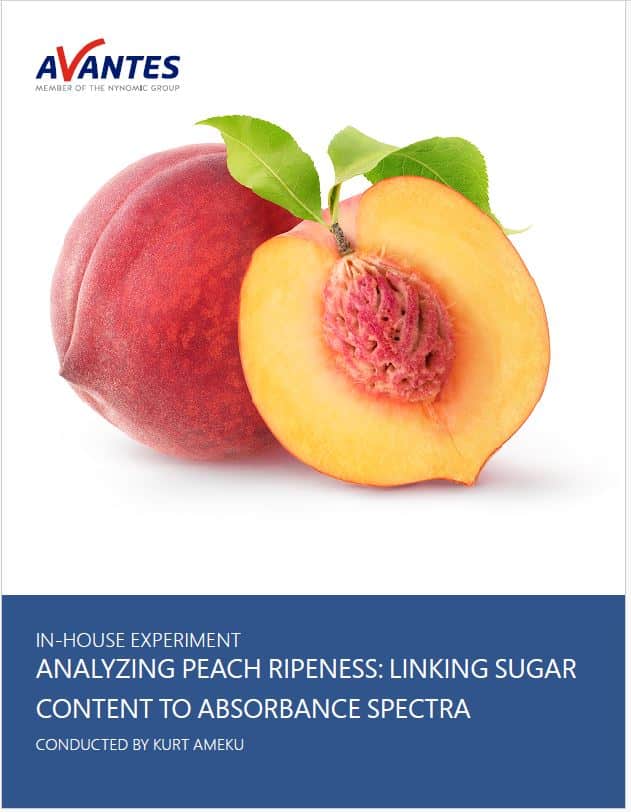Analyzing Peach Ripeness: Linking Sugar Content to Absorbance Spectra
 Background/Applications of Experiment:
Background/Applications of Experiment:
Peaches belong to a family of fruits known as stone fruits. Characterized by the large single seed in their center (also known as the stone or pit), stone fruits also include apricots, cherries, raspberries, olives, and even coconuts. Since most stone fruits will not ripen after being picked, it is essential that they are harvested at peak ripeness, which also means these fruits have a small window for consumption. Determining ripeness when buying stone fruits in a store can be done informally by giving the fruit a small squeeze (a hard fruit indicates that it is not fully ripe) or by smelling the fruit (the more aromatic the fruit, the riper it is).
While this is feasible for a customer buying a few pieces of fruit, how can distributors sort fruits to only include the highest quality, ripest fruits in their shipments? Since ripeness itself is somewhat subjective and difficult to quantify, it is often correlated with the sugar content in a fruit, which increases as the fruit becomes riper. Sugar content can be defined by the unit Brix (where 1 Brix is 1 g of sucrose in 100 g of solution) which can be easily measured with a device called a refractometer. Unfortunately, this sugar content measurement requires juice from the individual fruit, which is considered destructive in that the fruit is no longer in a condition to be sold to consumers. For commercial operations who are interested in characterizing and sorting fruits of various types by the ton, non-contact near-infrared spectroscopy can be used to measure brix accurately and efficiently. Around the world, a variety of companies produce near-infrared fruit sorting systems that are capable of characterizing hundreds of units of fruit per minute. Avantes is a major supplier to this industrial application with systems deployed around the world. Instruments of choice for this application are our AvaSpec-HS2048XL-EVO and the AvaSpec-ULS2048XL-EVO which both have exceptional sensitivity in the wavelength range of interest from 600-1100 nm along with high-speed sampling and data transfer capabilities.
This simplified experiment aims to demonstrate this non-contact technique for predicting the sugar content, and therefore the ripeness, within peach samples using this same spectroscopic technique. Peach samples were illuminated in free space with an overhead tungsten halogen lamp and were measured multiple times on a turntable using a bare 600 micron core fiber optic cable (FC-UVIR600-1-BX) connected to a spectrometer (AvaSpec-ULS2048XL-EVO). The sugar content of the peach samples was separately determined using a refractometer. The spectroscopic measurements were paired with the refractometer sugar measurements to create an algorithm to correlate the differences in the spectra to a level of sugar content. We then tested additional samples to determine the accuracy of our generated algorithm.
Read More
 My Cart
My Cart 